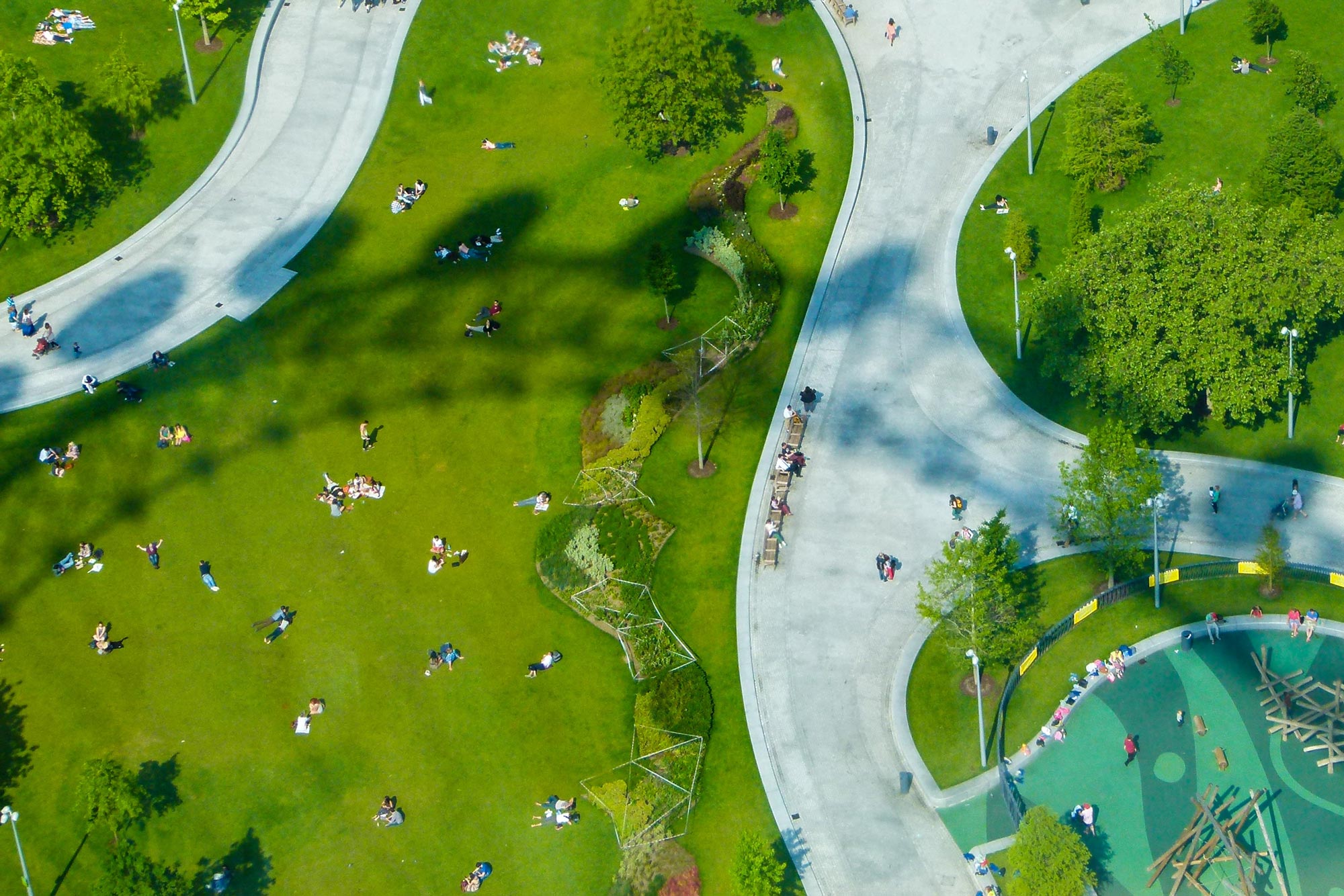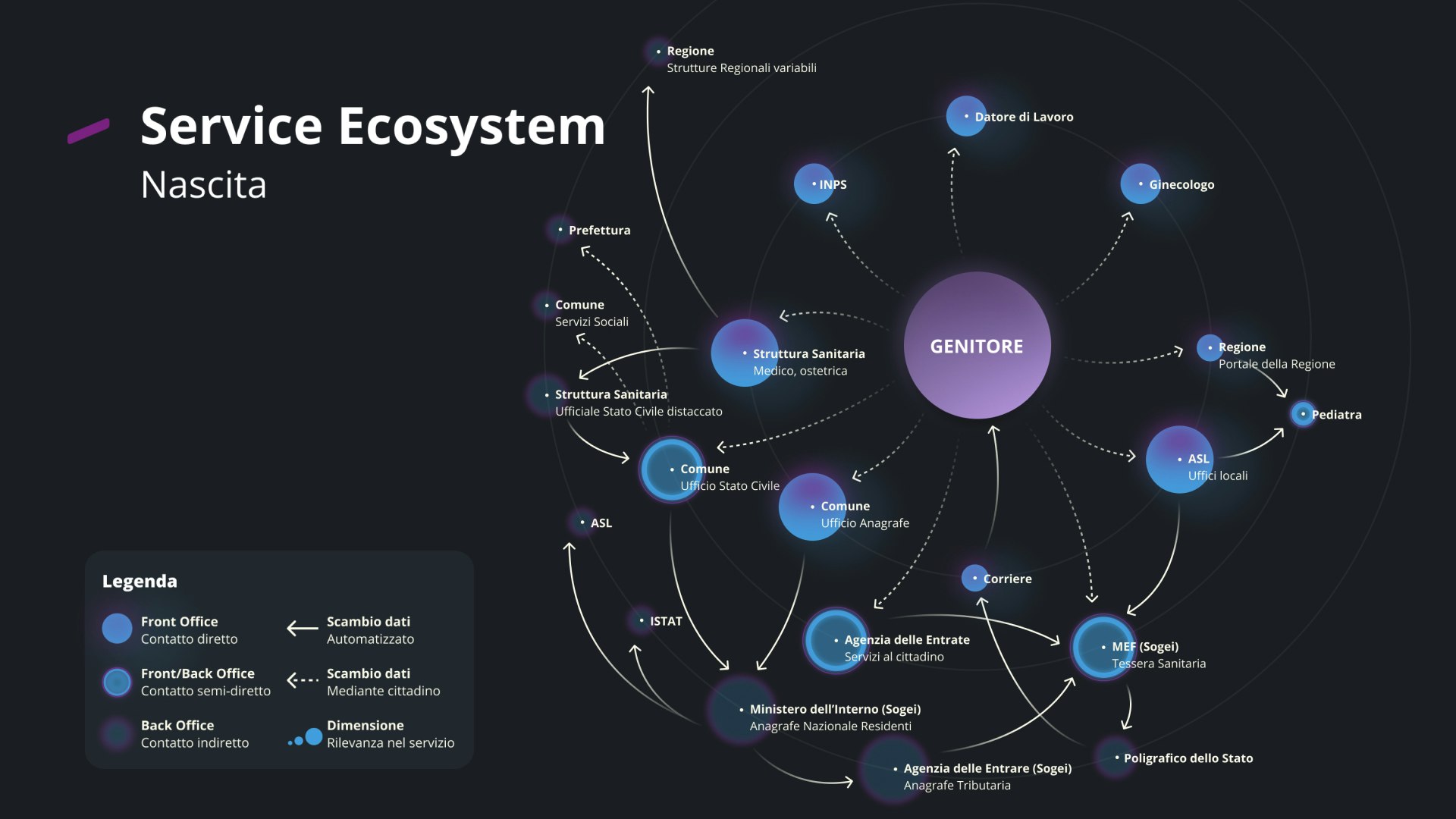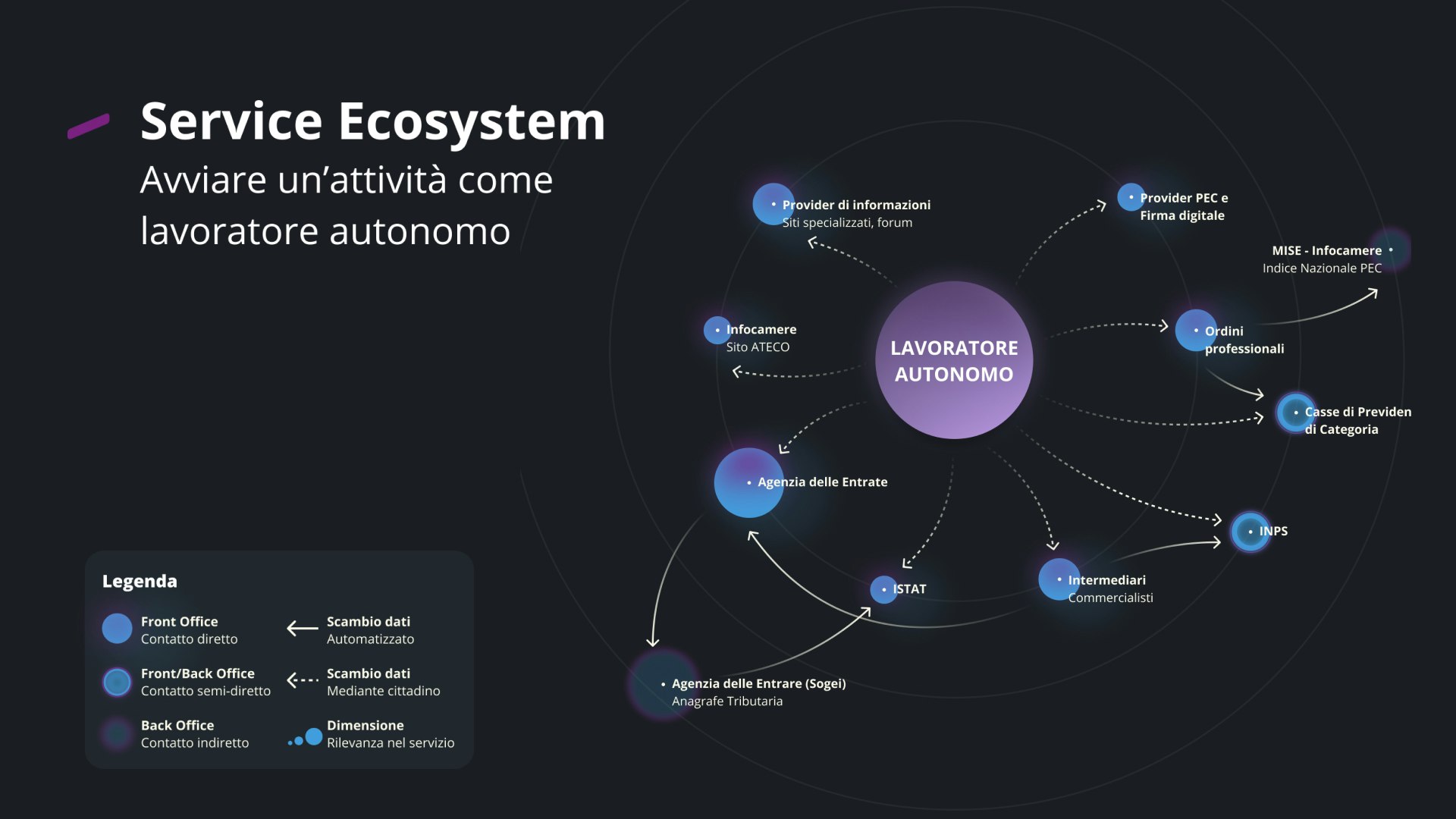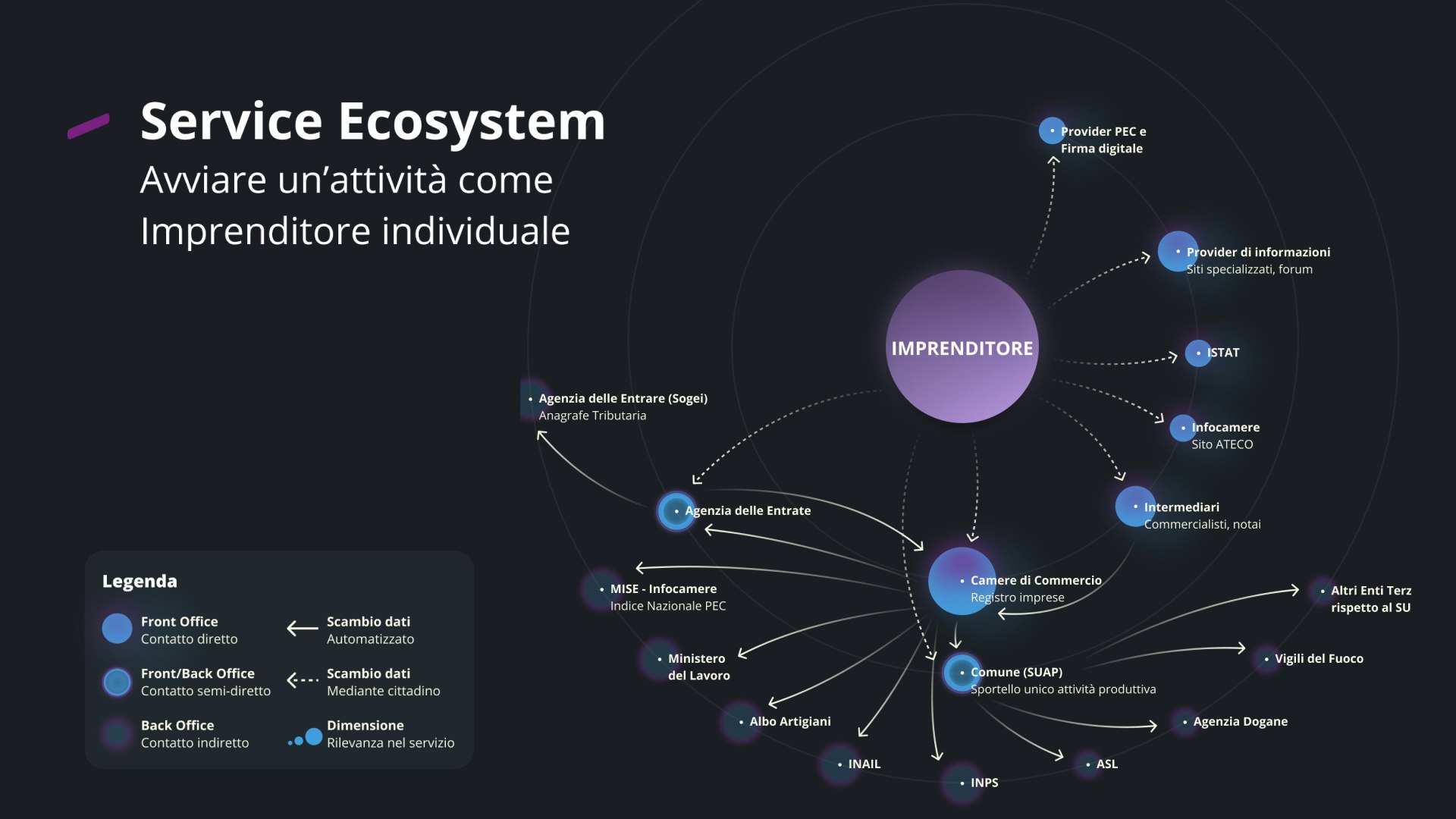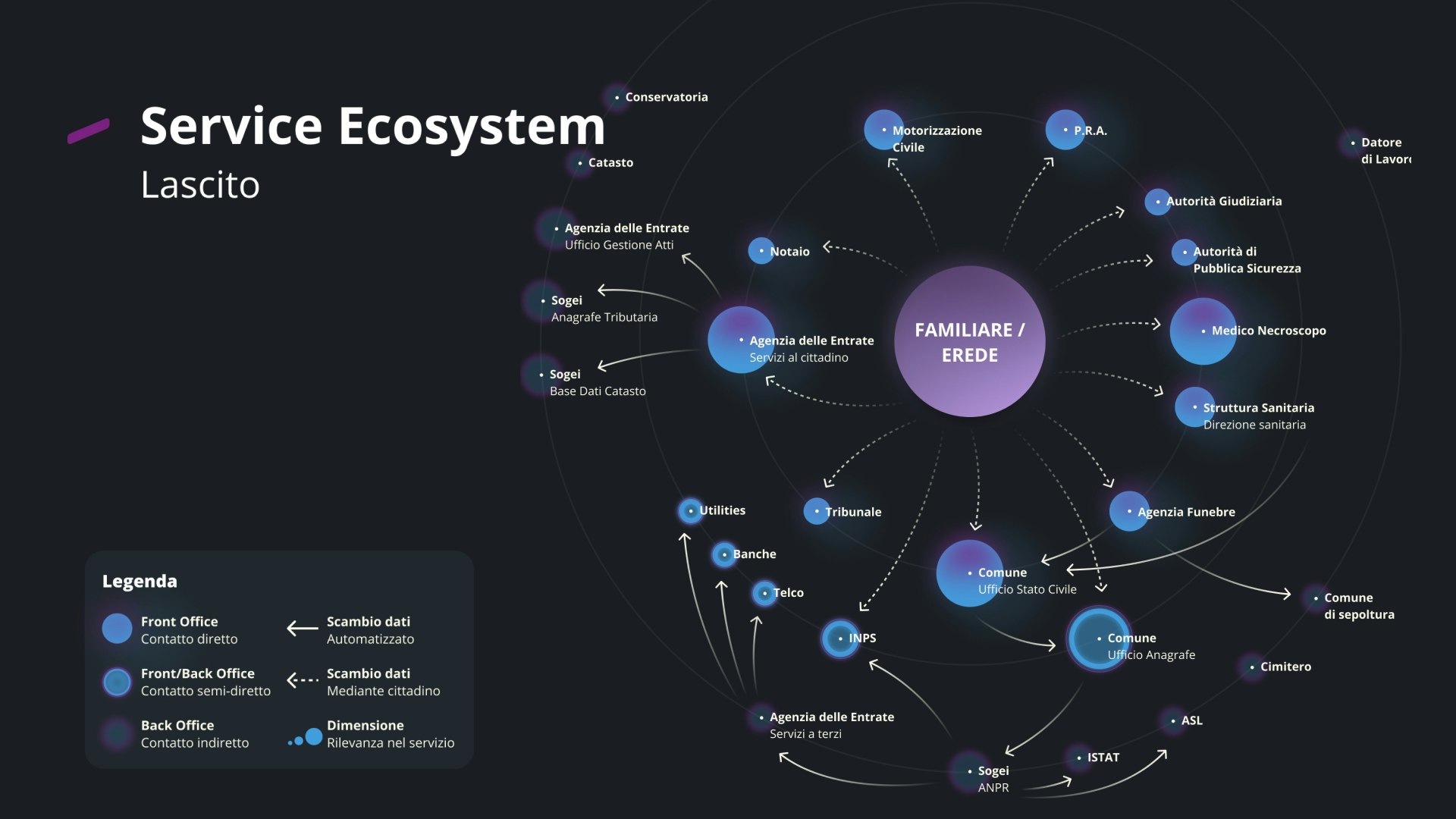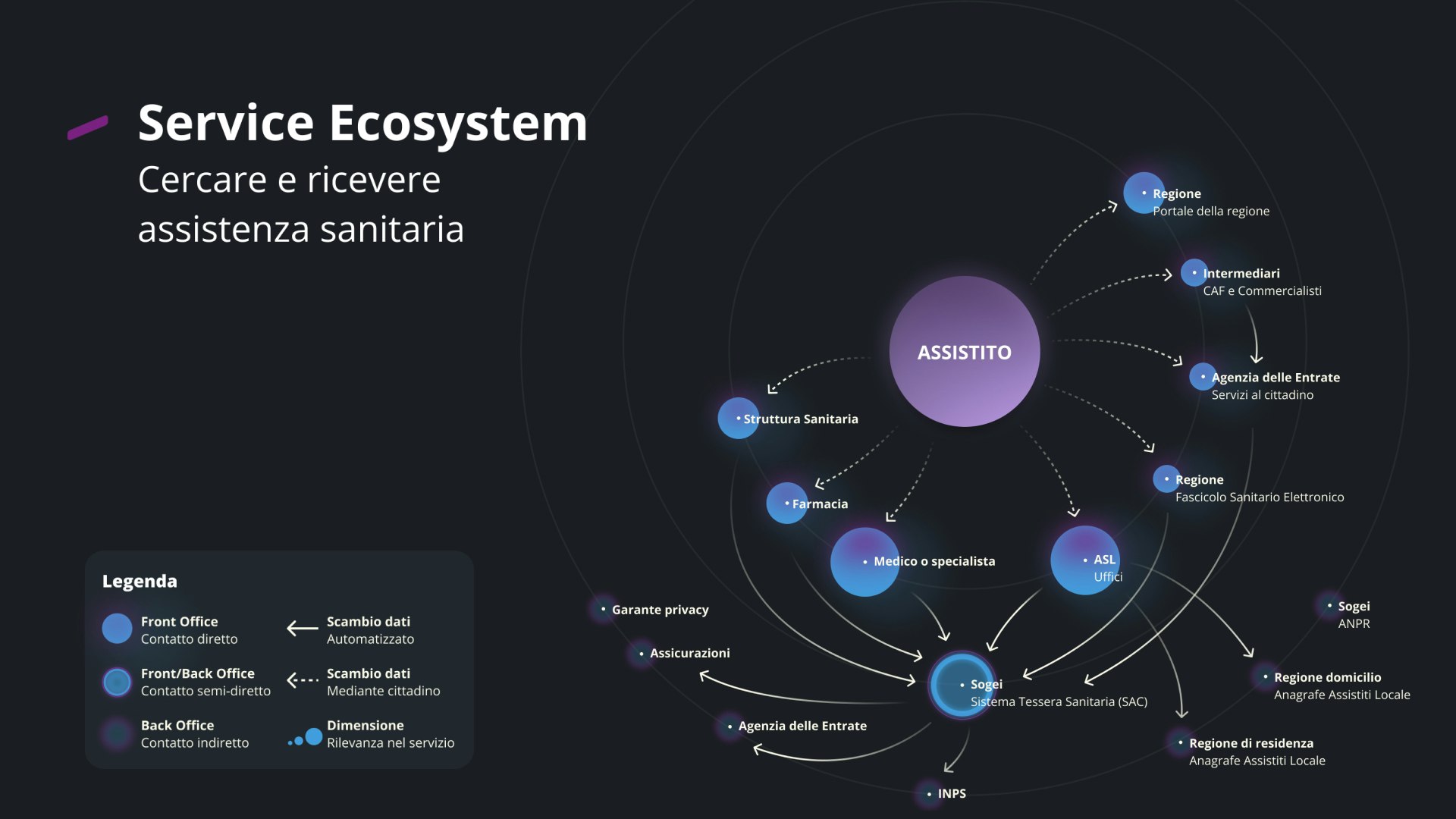Design for citizens' lives
We had to think of services beyond individual state structures and agencies to avoid getting stuck into a compartmentalised logic. The connection of individual moments of encounter (touchpoints) around critical occasions prompts citizens to interact with public administration. We called these ‘Life Events’: marriage, birth, opening a business, moving to another city, etc.
Thinking about services through the scanning of ‘Life Events’ allows the organisations involved to understand their role within a complex system of interactions and identify opportunities to respond to citizens' needs in a coordinated and collaborative way.
‘Life Events’ has become a way of organising services that allow PA-citizen interactions to be contextualised within an expanded, horizontal vision. Covering the entire journey of a citizen empowers the planner to identify citizens' needs systematically and how the PA responds.
By shifting the focus from PA services to these events, we discovered moments of disconnect between the services of different entities, uncovering opportunities for synergy or proactivity. In parallel, we conducted Futures Research activities to explore probable futures, define a vision of the desirable one, and understand each agency's role in making this vision a reality.
